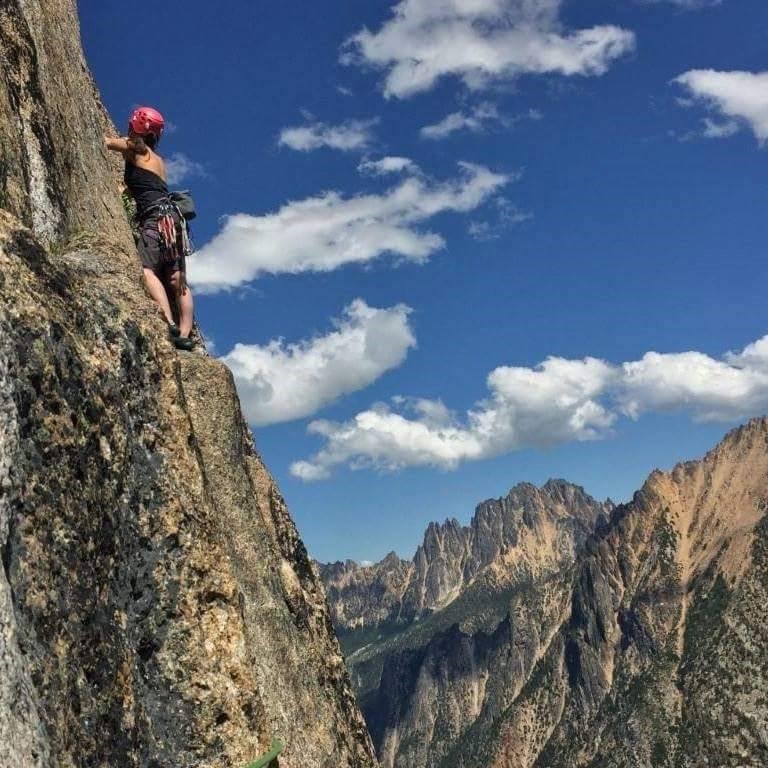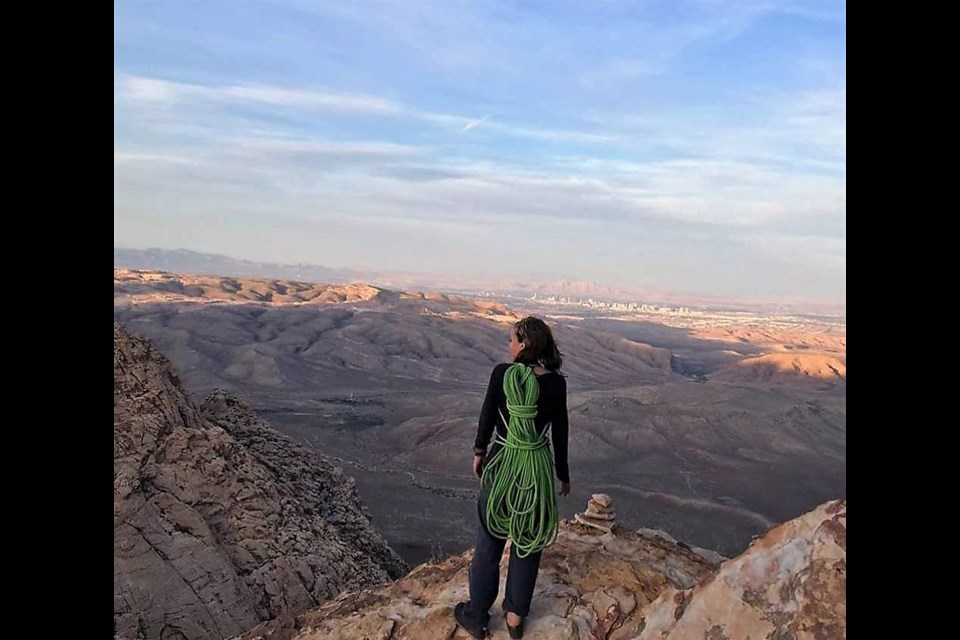In the months following a life-changing accident, Adrienne Wheaton doesn't want your pity or any handouts, but she's receptive to a ‘How's it going?'
"Now that things have stabilized, I'm pretty independent," said Wheaton. "I don't know if I need help — other than people checking in and asking how things are going."
Wheaton lost her thumb and parts of her middle and ring fingers on her dominant hand after taking a fall in Ground Up, a local climbing gym, in March.
In the moments before the accident, Wheaton was scaling a 5.11-minus route on the centre wall at the indoor gym. For context, 5.15 is considered the hardest rating.
For Wheaton, who's been climbing for 10 years, this was fairly routine. However, about two-thirds of the way up, she took a fall while she was clipping into a bolt.
"I remember feeling that sensation of the fall not stopping," said Wheaton. "This time it felt like I was falling farther and I think, just out of instinct, I must have reached out and grabbed the rope — which is not uncommon — even though we are taught not to do that."
In that moment, she says the rope likely wrapped around her hand. As the rope tightened from the force of the fall, her thumb was completely severed. Her ring and middle fingertips were left hanging only by nerves and tendons.
She said: "I remember the rope going tight around my hand, and looking down at my hand, and I was still hanging on the rope — it had caught me by this point, obviously, and had tightened up — and seeing just an absolute mess of a hand and seeing my thumb gone."
Lauren Watson, the owner of Ground Up, said she couldn't provide more details on the accident, as surveillance cameras weren't angled to catch Wheaton's route at the time of the incident.
However, Watson did have some words with respect to safety.
"When it comes to prevention, that is a tricky subject," Watson said in an email to The Chief. "Climbing is inherently dangerous and what happened in Adrienne's situation was an unconscious decision from a very skilled and experienced climber, I don't know how you prevent it... as we weren't in that exact situation."
She said that grabbing the rope on a fall can be very dangerous and should be avoided.
Many do this habitually without consequence, but there's a serious risk every time it's done, Watson said.
"I am thankful for Adrienne's openness to share her experience and allow us to try and learn what we can from it and support her as a community," Watson added.
Wheaton expressed gratitude for the support of her friends, family and community and said that she hopes her story can help others avoid a similar situation. At the same time, she added that she didn't want to see parents pulling their children away from the sport.

Most climbers say the activity is relatively safe, assuming proper technique and gear are used.
John Howe of Squamish Search and Rescue said climbing accidents seem to make up a small number of rescue calls, but the group has yet to filter out that data to provide detailed statistics.
As a result, it can be difficult quantifying how risky the activity is in Squamish.
Numbers are, however, available from Boulder, Colorado, one of the most popular climbing locations in the world.
A Rocky Mountain Rescue Group study from 1998 to 2011 found that among the 2,198 search and rescue calls, 428 — that's 19.5 per cent — were for climbers.
About 58 per cent of those climbers were involved in roped climbing.
Among roped climbers, lead falls — the type of incident Wheaton had — were the dominant accident at 30 per cent.
Belay incidents and getting lost in the area were the next most common rescue calls for roped climbers at 21 per cent and 18.5 per cent, respectively.
However, the reality of accidents extends beyond numbers on a spreadsheet.
After an attempt to re-attach her thumb failed, Wheaton has spent much of her time relearning her way through activities many take for granted.
Opening a door. Driving a car. Writing.
These are all tasks that required Wheaton to find new solutions.
It's also been difficult for her to resume her work as a server.
"I am re-evaluating what kind of work I can do if I don't have a thumb for the rest of my life," she said. "I was on medical EI for the first 15 weeks you're allotted. That's since over."
At the moment, Wheaton is considering a difficult decision — whether to continue with her hand as it is, or if she should go ahead with a toe-to-thumb transplant.
If everything goes as scheduled, she could be receiving the procedure as early as this coming November.
But there are challenging considerations — namely, deciding whether she should trade one part of her body for another.
Doctors tell her that, generally, her gait and balance won't be affected. But questions remain as to how removing a toe would impact Wheaton's climbing, a sport where precise footwork is crucial.
Then there's the process of undergoing therapy and retraining her toe to act as a thumb.
"How do you decide which body part is more important?" she said.
Initially, Wheaton considered a mechanical thumb.
However, she's found that these devices probably won't work, as there isn't enough surface area left on her hand for a good attachment.
She has considered a prosthetic, but its working function would be very limited.
As of now, Wheaton still has yet to make that tough decision.
"One day I think I'm going to have the surgery, the next day I don't want to," she said. "It's back and forth every day."
The first eight weeks after the accident were slow. Her fingers were left unstitched in hopes of preserving as much length as possible.
But there has been progress since then.
"You do find ways to adapt," she said. "My left arm and hand are becoming a lot stronger."
Her hand's nerve sensitivity is re-adjusting — her body still needs to recondition itself to the new endpoints on her fingers. There's still pain when she touches the ends of those fingers, but it's less intense.
"They're hard and they're freezing cold 90 per cent of the time," Wheaton said. "The idea, though, is to desensitize it as much as possible by touching it against sand or smooth surfaces."
Wheaton has also tried climbing again.
"We've done some very familiar, easy climbs, but right now it's not fun — it's frustrating, and it hurts," she said.
"I hope to get back to climbing. It's just hard to picture how that will look right now."

Hiking is what keeps her sane now, she said.
Meeting climbers who have been in similar circumstances has also given her some solace.
Recently, at an adaptive climbing clinic, Wheaton met Craig DeMartino, the first amputee to climb El Capitan in Yosemite in under a day.
She’s also met Erik Bjarnason, a former Squamish resident who climbed Mount Elbrus in Russia after losing fingers and a thumb.
Wheaton has also been following the work of Melissa Strong, a blogger who's been documenting her climbs after a severe hand injury.
"I take a lot of comfort in seeing others who've sustained more severe injuries than me, and I've seen what they can do," Wheaton said.
"That gives me a lot of hope."



